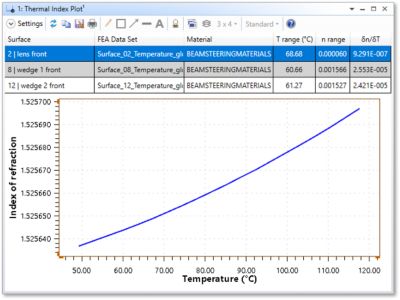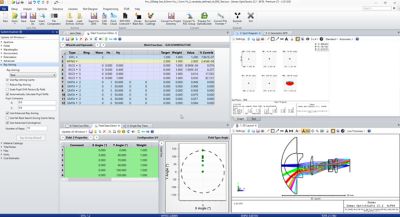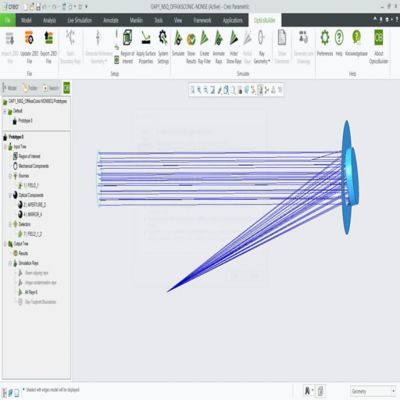-
United States -
United Kingdom -
India -
France -
Deutschland -
Italia -
日本 -
대한민국 -
中国 -
台灣
-
-
產品系列
查看所有產品Ansys致力於為當今的學生打下成功的基礎,通過向學生提供免費的模擬工程軟體。
-
ANSYS BLOG
March 15, 2022
Stop and Stare: Optical Design is Something to See with the Latest Zemax Release
Zemax, an Ansys company, has unveiled three major product releases, which include new analysis visualization tools for OpticStudio and OpticsBuilder, and enhancements to its award-winning OpticStudio STAR Module.
As the newest product in the bunch first introduced last spring, the STAR Module has already received high praise. SPIE, the international optics and photonics society, has chosen the module as its 2022 Prism Award winner in software. The awards celebrate cutting-edge innovation in the optics and photonics industry.
“As a technology leader at Zemax, I have always strived to advance innovation in our products,” says Sanjay Gangadhara, Chief Technology Officer of Zemax. “SPIE’s recognition for our innovation is truly an honor.”
Rising STAR Module Advancements
The winning module, named with an acronym to represent structural, thermal, analysis, and results (STAR), is designed to optimize workflows between finite element analysis (FEA) packages and OpticStudio, expanding the design software’s capabilities to include structural, thermal, and optical performance (STOP) analysis based on FEA datasets.
The biggest enhancement to the module is its improved thermal FEA fitting functionality, which now supports multiple wavelengths at the same time. This means you can analyze optical design performance throughout all associated temperatures and wavelengths of the system. The improved thermal FEA fitting functionality affects optical applications where spectral response is crucial to system design, such as cell phone lenses and cameras, autonomous vehicles (AVs), and guided laser cutting tools.
There is also a unique wavelength option in certain STAR analyses that allows you to view optical system performance at any wavelength you choose.

Figure 1. OpticStudio’s new Thermal Index Plot Tool allows you to observe the refractive index in connection with your FEA thermal dataset temperatures.
Another new feature is the Thermal Index Plot tool (shown in Figure 1), which allows you to observe the refractive index in connection with your FEA thermal dataset temperatures, as well as the refractive index range calculated by STAR. Mapping, or plotting, the refractive index alongside the temperature helps you to anticipate temperature effects for each surface in an optical design and monitor the index range to see which lens faces potential challenges.
You can also anticipate your FEA datasets in OpticStudio with the new FEA Data Viewer tool before loading data into the system or assigning it to an optical surface. This allows you to easily confirm datasets without performing new calculations. Key parameters, including dimensions and center locations, are clearly displayed to select the appropriate FEA dataset in advance, avoid errors, and spend less time loading unneeded data.
New Sights to See with OpticStudio

Figure 2. The new ray-aiming tool in OpticStudio supports wide-angle system design.
A new ray-aiming tool (shown in Figure 2) has been added to OpticStudio, the flagship optical design solution, to support wide-angle system design. This upgrade affects applications that require a wide field of view, including machine vision, surveillance cameras on drones, AV cameras, and cell phone lenses. It also remedies existing glitches, such as traceability errors.
Additional release features include enhanced ZOS-API support for Mathematica software; new abilities to define the aperture stop (AS), or lens ring, to easily create chief rays in OpticsBuilder; and project directory support for storing and updating design files within one location.
You can also choose from 16 new materials in the CDGM material catalog to simulate your lenses as well as access updated thermal coefficients. The CDGM catalog is built into OpticStudio and accessible via the Lens Data Editor tool. The CDGM Glass Company Ltd., located in China, is the largest producer of optical glass in the world.
OpticStudio Professional, Premium, and subscription versions offer exclusive release features, including non-sequential off-axis mirror improvements, updated surface-relief grating dynamic link libraries (DLLs) using the rigorous coupled-wave analysis (RCWA) method, and new non-sequential diffraction analyses for volume holograms.
Optic Boosts to OpticsBuilder
OpticsBuilder, which streamlines optomechanical packaging, is now available on PTC Creo Parametric 7.0.5.0 or later.

Figure 3. OpticsBuilder for Creo has been updated to support the non-sequential off-axis mirror component in OpticStudio.
In addition, OpticsBuilder for Creo has been updated to support the non-sequential off-axis mirror component in OpticStudio, mentioned above, and can be used throughout the Zemax product platform.
This upgrade also launches the Chief Ray tool, which generates chief rays based on sources you select.
All newly released versions of OpticsBuilder also contain six new sample files, including a cellphone camera lens, cube satellite, laser-induced thermal lensing effect, ultra-short throw projector, Schmidt–Cassegrain telescope, and a riflescope. Additionally, there are multiple bug fixes and three existing sample files have been upgraded, including the Heliar 37mm, Single Gauss 25mm, and Laser w Aplanatic Lens.
For more information on the latest features and product developments, visit the Zemax website.










